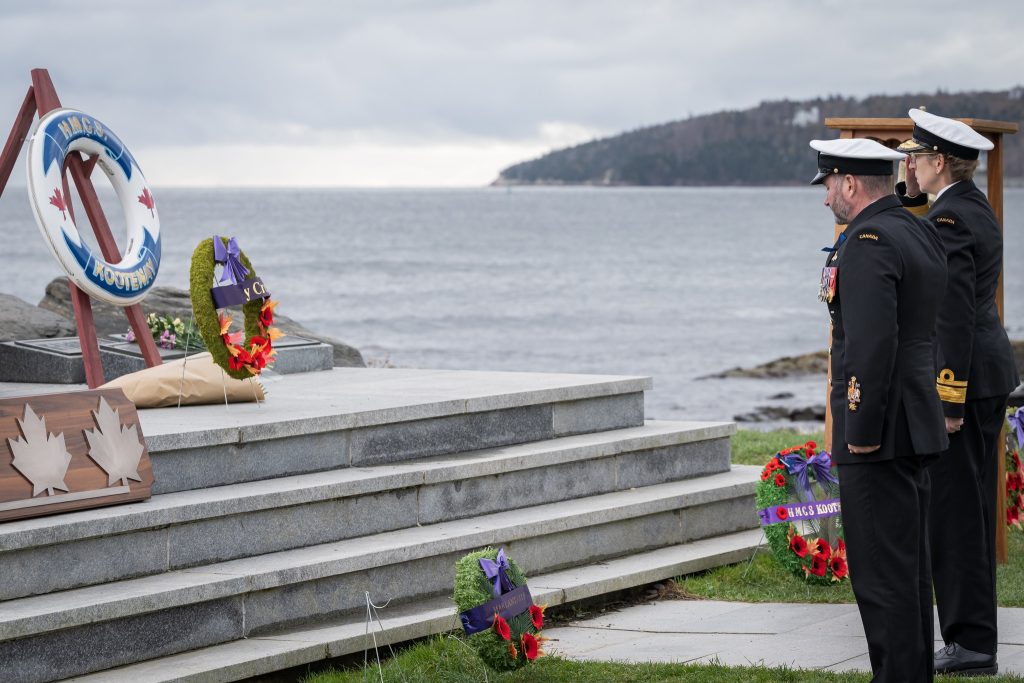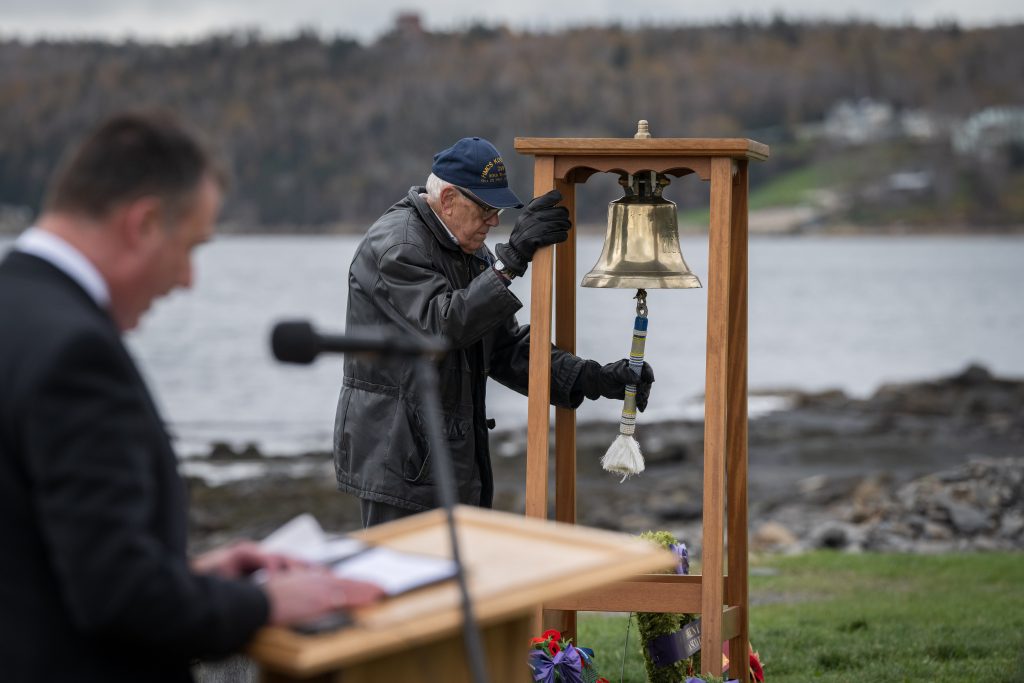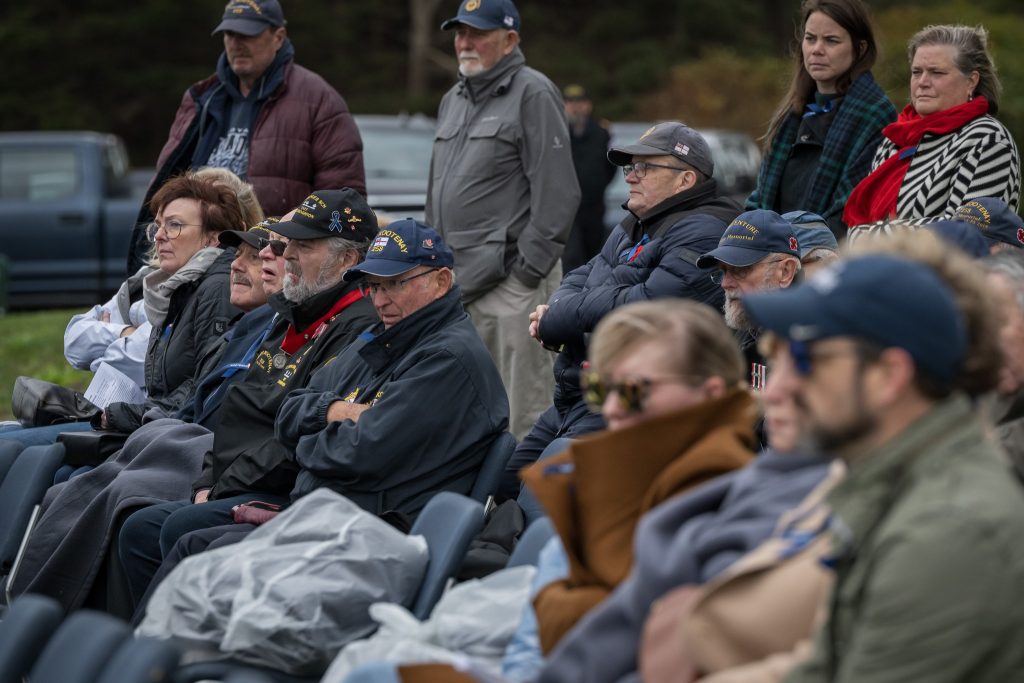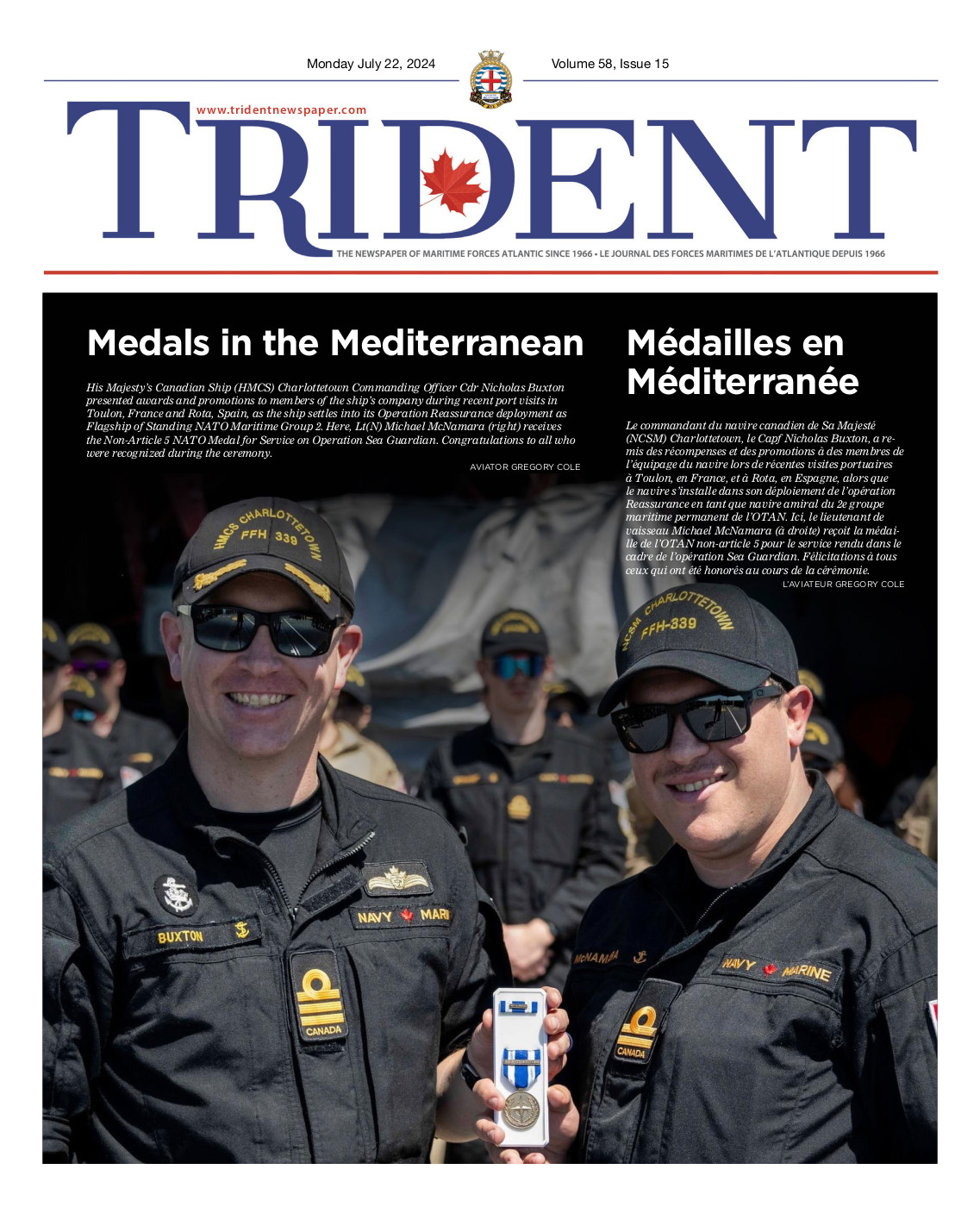
Naval community, survivors reflect on legacy of HMCS Kootenay disaster
By Ryan Melanson,
Trident Staff

The current commander of Maritime Forces Atlantic joined the Royal Canadian Navy in 1988, almost 20 years after the explosion at sea aboard HMCS Kootenay on October 23, 1969. Like all Canadian sailors, Rear-Admiral Josée Kurtz said she learned about the tragic incident, and the many firefighting and damage control lessons learned from it, during her training.
It wasn’t until later in her career, however, that she began to understand the full legacy of the explosion, including the long-lasting impact on the ship’s company.
“I’ve been fortunate to talk with and to hear the story from people who were there, to understand the pain and personal impact that is still vivid for the survivors and their families to this day,” RAdm Kurtz said, speaking at the commemoration ceremony marking 54 years since the disaster.
Just after 8 a.m. on October 23, 1969, HMCS Kootenay, sailing with a Canadian task force, suffered a catastrophic explosion in its starboard gearbox during a routine full-power trial off Plymouth, UK. Caused by a faulty bearing installation, the resulting fire and toxic smoke claimed nine lives and left 53 other members of the ship’s company injured. Despite limited resources, crew members organized a daring rescue and firefighting operation. The ship was left severely damaged, but afloat.
This year’s commemoration was held at the Canadian Peacetime Sailors’ Memorial, where the names of the lost Kootenay sailors are among those listed. The Kootenay incident remains the Royal Canadian Navy’s worst peace-time disaster.
“These names remind us of the risk that is inherent to our business at sea,” RAdm Kurtz added.
“They are no longer with us, but their legacy and dedication to service at sea lives on.”

family and friends. S1 BRYAN UNDERWOOD
Many of the surviving crew, and their family members, were in attendance. Patti Christie, daughter of the late PO2 Robert Christie, was given special credit for her work to help preserve HMCS Kootenay’s legacy in recent years as an active member of the “Kootenay Family”, while Leading Seaman (ret’d) Allan “Dinger” Bell was also lauded for his many years working to get his shipmates proper recognition for their actions.
Some of that work came to a head when the RCN marked the 50th anniversary of the explosion in 2019 – the Kootenay ship’s company was presented the RCN Unit Commendation for their bravery, heroism, and professionalism on that day. The presentation was described as an overdue, but very significant, step in properly recognizing the incident, the work of the crew, and the lasting impact on their lives and families. Many of the Kootenay survivors dealt with physical and mental health issues in the aftermath, some suffering with post-traumatic stress disorder for decades before receiving professional help.
Pattie Christie said her father was one of them, which led to him becoming estranged from his family for decades. They reconnected in 2003, and after his death in 2006, she found comfort in connecting with his former shipmates.
“I’m so grateful to be part of this family now, and hearing their stories, including positive stories about my dad, has helped me feel closer to him,” she said.
The commemoration also highlighted the role of the RCN’s Damage Control Training Facility Kootenay. The facility opened in 2002 in Purcell’s Cove, and serves as a hub for naval firefighting, flood, and other safety training in the region, continuing to implement and expand on the lessons learned from the Kootenay tragedy in 1969.





